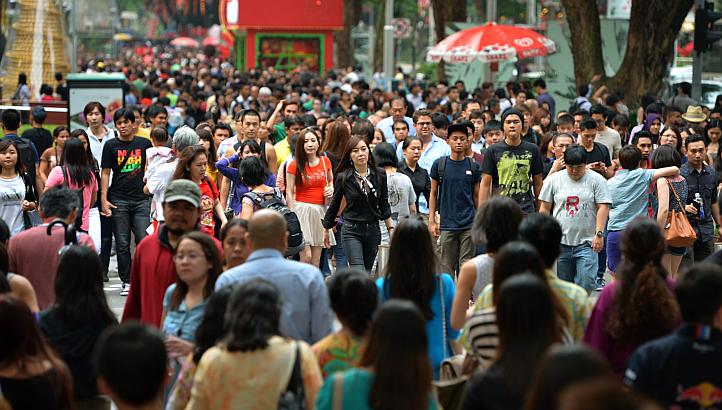Population hits 5.61m
I refer to the article “Singapore’s population hits 5.61 million in June, with more births, maids, long-term visit passes” (Straits Times, Sep 27).
It states that “On the whole, the citizen population grew by 1 per cent from June 2015 to June 2016.
The non-resident population grew by 2.5 per cent over the same period, to 1.67 million people. The bulk of this growth came from foreign domestic workers and dependents on long-term visit passes, said the report.”
Citizen population grew by 33,900, but 20,815 new citizens granted?
The citizen population grew last year by 33,900 (3,408,900 – 3,375,000).
However, 20,815 new citizens were granted in 2015.
“Real” citizens increased 13,085?
So, does this mean that the net increase in “real” (non-new) citizens was only about 13,085 (33,900 – 20,815) (citizen births – citizen deaths – increase in Singaporeans overseas) for the year?
New citizens outstripping “real” citizens?
If so, then the annual increase in new citizens may be outstripping that of “real” (non-new) citizens by about 7,730 (20,815 – 13,085) a year.
Does it mean that “the citizen population (which) grew by 1 per cent” comprised about 0.61 and 0.39 per cent for new citizens and “real” (non-new) citizens, respectively?
Foreigners increased 41,400?
The foreign population increased last year by 41,400 (1,673,700 – 1,632,300) and the PR population decreased by 3,100 (527,700 – 524,600).
So, the net increase in the non-citizen population was 38,300 (41,400 – 3,100).
Foreigners increased 3 times more than “real” citizens?
Foreigners + new citizens increased 4.5 times more than “real” citizens?
Does this mean that the non-citizen plus new citizen population growth of 59,115 (20,815 + 38,300) may be outstripping the “real” (non-new) citizens’ growth by 46,030 (59,115 – 13,085)?
In other words, both the new citizens (20,815) and non-citizens’ population (38,300) growth may be increasing at a much faster rate than “real” (non-new) citizens (13,085).
Citizen population increased 301,000, but new citizens increased 174,738?
From 2006 to 2016 – the citizen population increased by 301,000 (3,408,900 – 3,107,900).
However, 174,738 new citizens were granted from 2007 to 2015.
New citizens outstripping “real” citizens?
So, does it mean than the average increase in “real” (non-new) citizens per year was only about 126,262 (301,000 – 174,738 divided by 9 years)?
In other words, does it mean that new citizens granted (174,738) was at a much higher rate and quantum than “real” (non-new) citizens (126,262)?
378,609 new PRs were granted?
From 2007 to 2015 – 378,609 new PRs were granted.
PR population increased by 106,600?
Foreign population increased by 798,300?
From 2006 to 2016 – the PR population increased by 106,600 (524,600 – 418,000) and the foreign population by 798,300 (1,673,700 – 875,400).
Non-citizen population increased by 904,900 – 7 times more than “real” citizens?
In other words, the non-citizen population increased by 904,900 (798,300 + 106,600) against citizens’ (including new citizens) increase of 301,000 or “real” (non-new) citizens’ increase estimated at 126,262.
Note: As some of the figures given in the report are from January to December and some from June to June, and some are from 2006 to 2016 and 2007 to 2015 – the above are estimates.
Leong Sze Hian
